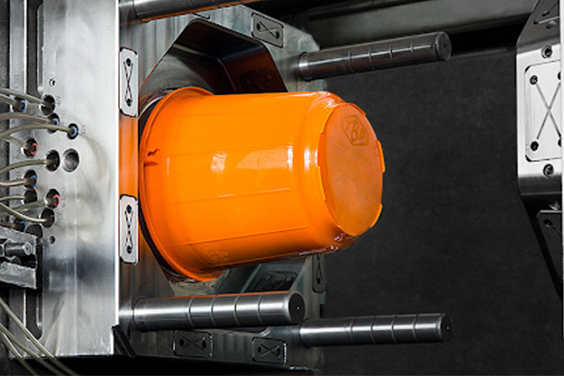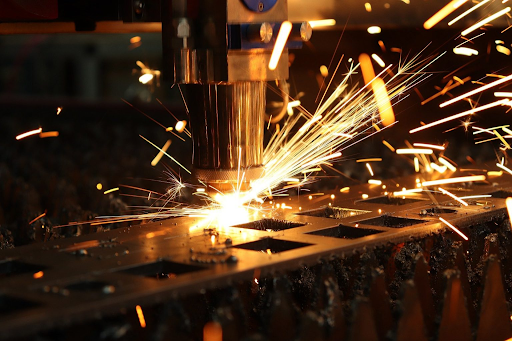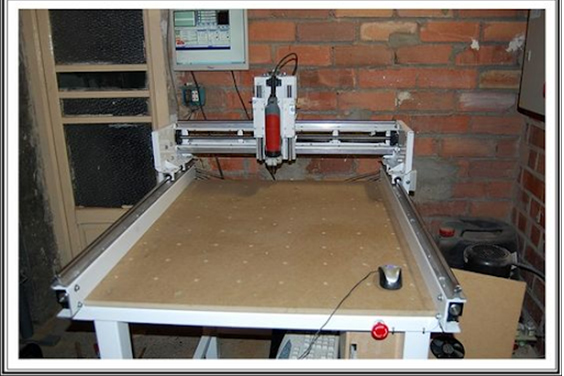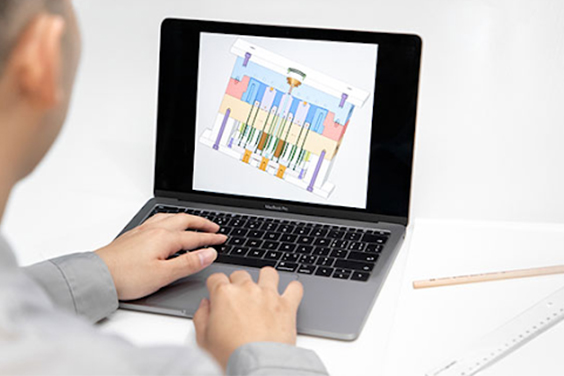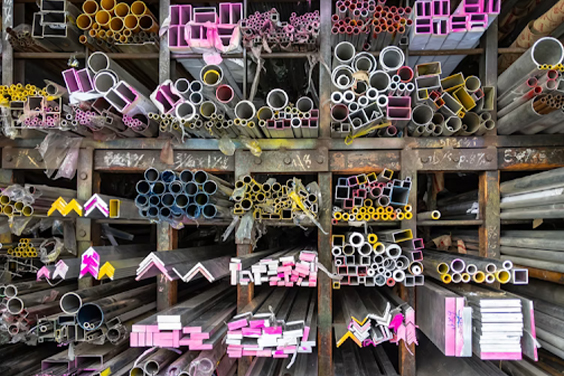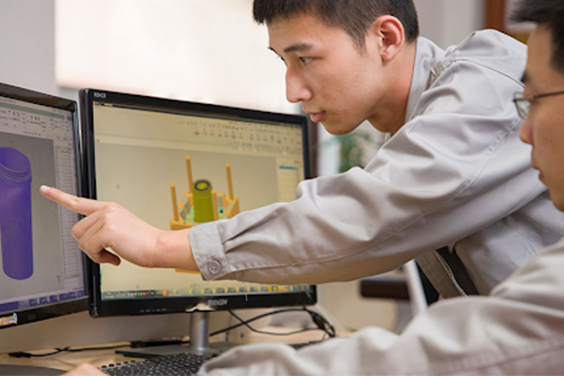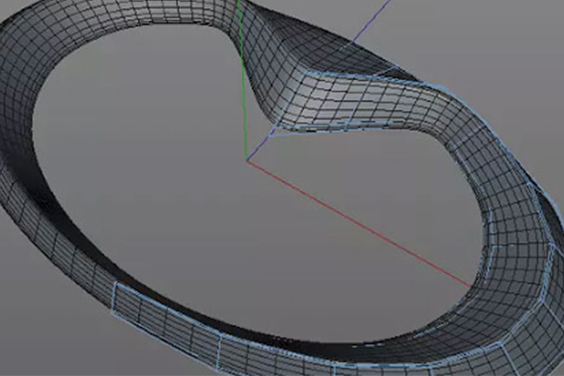CNC Machining vs. Injection Moulding: Which is Better?
- Home
- > Blog
- > CNC Machining vs. Injection Moulding: Which is Better?
Share :
Share :
Using a mould to make objects is a widespread activity. Cookie cutters, cake tins, and Jello moulds are common in most kitchens. Moulded things can be found in our homes, cars, and hospitals. They are also necessary for aerospace and military engineering. Moulds are used to make everything from plastic dinosaurs to spaceship elements.
Injection moulding is a process that producers employ to create parts for a variety of customer and industrial purposes. Melting raw material and injecting it into a mould under high pressure is the procedure. Injection moulding has inexpensive prices and fast turnaround times when producing large numbers. Other production methods may provide good outcomes for parts that require more accuracy, such as those used in medical equipment or military and aerospace uses.
In this article, we are going to compare cnc machining and injection moulding.
What is Plastic Injection Moulding?
By injecting molten substances — most frequently thermoplastics – into moulds, also known as instruments, plastic injection moulding creates components. The plastic is warmed in the barrel prior to getting injected, then injected into the mould, moved along runners, and finally into the part itself. When the procedure is finished, the mould opens and the part is expelled, allowing the procedure to begin again. A well-made mould, coupled with the correct plastic resin, may generate accurate parts at a rapid rate when packed into hydraulic or electric machinery.
Advantages of Injection Moulding
When it comes to producing large quantities of remarkably similar parts, most producers opt for injection moulding. With anything from toys to vehicle engine parts—anything that requires to be bulk-produced out of moldable plastic—can benefit from this method.
Injection moulding provides a wide range of substances, and new ones are developed on a regular basis to meet the demand for high-efficiency plastic parts. Injection moulding can incorporate softer portions that require TPE or rubber material, while CNC machining couldn’t.
Injection Molding's Drawbacks
Injection moulding gives a reduced piece-part-price in larger volumes. Start-up expenses are driven up by the expenses of creating the actual moulds for injection moulding. To manage the elevated pressures, certain components, such as fibreglass reinforced plastics, necessitate moulds made of hardened tool steel.
Another disadvantage of injection moulding is the cost of part modifications, which normally necessitate the creation of a new tool or mould. Furthermore, moulds are made up of two pieces that must be joined for injection, which can result in surface defects. The injection system has the potential to introduce air bubbles into the materials, causing additional flaws.
There are numerous advantages to using injection moulding, particularly when mass-producing items. CNC machining may be a preferable option for getting high-quality plastic parts depending on the application of your product, component specs, and required volume.
What is CNC Machining?
CNC machining is about stripping away, but moulding is about adding. CNC machining, which translates to computer numerical control, is the process of removing material from a solid block one layer at a time utilizing computer-controlled cuts. This data is extracted from a CAD or comparable digital file, enabling changes to the files in the interim.
These files are broken down by the computer into a series of instructions, which are then supplied to one or more milling equipment, which operate on the substance to create the desired product. This enables a seamless adjustment between digital and physical designs.
Advantages of CNC Machining
Various sorts of inserts are utilized in the design engineering of molded components. In most cases, the metal insert in the plastic molding is constructed of brass, stainless steel, or ordinary steel.
These molds contain threaded surfaces, which improves adherence to the product.
The molds are put vertically in the machine, either by hand or by CNC machining. The vertical posture ensures that the mold remains in place during over-molding and insert molding by using gravity. The molten plastic is now poured into the mold, which is then closed.
Inserts are utilized in a variety of techniques, including injection molding, compression molding, GRP molding, SMC/DMC molding, extrusion blow molding, structural foam, and rotational molding.
1. Consistent Use with Minor Upkeep
Manual machining can only take place if skilled personnel are available. Progress comes to a halt as the employees take a break. CNC machines, on the other hand, may work around the clock. The controller can programme the computer and instruct the machine to make the required part based on the project’s design. The machine then automates the part-making process, letting the programmer go on to the next machine. CNC machines mean minimal personnel and boost a machine store’s manufacturing by clearing up controllers.
2. Specificity
A machine’s accuracy relates to how tight of a tolerance it can achieve. High accuracy is not possible with all CNC machines. Any CNC machine company you work with should be able to provide you with information about their accuracy qualities. If your tasks demand dimensional accuracy, high accuracy machining could save lives. High-precision, machined parts are commonly used in the aerospace and defence industries. Because these parts could be installed in aircraft, vehicles, or defence equipment, making them to their standards could save lives.
3. Authenticity
The project’s correctness is determined by how closely the manufactured part follows the plans. Human machinists can make mistakes that generate tiny inaccuracies that can lead to large issues. Even little variations from the correct design can cause applications that require parts to follow rigorous design criteria to fail. CNC machining automates manufacturing and improves accuracy, although the operator retains some control over the procedure.
The operator has a significant impact on the precision of CNC machining tasks. Since the user controls so much of the precision, selecting a machine shop that goes above and above to complete tasks is crucial to attaining the outcomes you want.
Disadvantages of CNC Machining
1. Fault in the Controllers
A CNC machining project’s consistency can be controlled to a large extent by the controller. While operator error can lead to issues with the machined part’s accuracy or the program that was used to generate it, there are some things you can do to mitigate that risk.
To begin, look for a machine shop that has well-trained employees who understand how to get the most accuracy out of the machine.
2. Dimensions' Limitations
The capability of a machinist to roam about a large part is one of the advantages of manual production. The dimensions of the part you’ve machined may be limited in some CNC machining tasks.
The size of the casing and the tool trip length dictates the size of the product that can be machined in a shop.
Selecting the Most Appropriate Approach for Your Future Assignment
In general, this can be seen as an exchange between a variety of factors, including speed, volume, material, tolerances/surface polish, and design. Each of these can be a deciding factor in whether to use one method over another and may even necessitate changes to the part in order to produce it. Let’s take a closer look at each.
1. Volume
Let’s take a look at this without regard to time. Instead, the price per part is the key focus here. Based on the volume, which is the cheapest option changes. When you only need a few pieces to a few hundred, CNC is the way to go. While there is some price gain with volume, it is usually in the range of a few parts to a hundred. There is no extra bonus of volume in bigger quantities. This is due to the setup cost being spread out over the number of pieces produced.
Injection-moulded items are much less expensive per part than machined parts. However, manufacturing the mould for injection moulding can be a significant upfront investment. The cost per part is then calculated by multiplying this by the number of parts produced. Even with the high initial cost of the moulds, injected parts get cheaper than machined ones at a certain volume. As more parts are produced, the cost disparity widens.
2. Materials
CNC machining allows for a wider range of substances to be used in the production of parts. If a high-efficiency plastic or a specialized plastic is required, this can be a critical decision factor. Stronger plastics are generally easier to process than softer plastics.
The substance selection for injected moulded elements may be more limited. Moulding is being used to generate a growing number of high-performance substances. One of the firms that have a large assortment of moldable plastics is Solvay. Some substances are challenging to machine but not hazardous to mould. Rubbers and other flexible materials are examples of this.
3. Designs
Is the design going to alter? That should be the initial question. If this is the case, you may not want to invest the finances on a mould just yet. Moulds are complex, if not unattainable, to adjust for design changes.
But even before that, designing a product for machining versus moulding might be quite distinct. In both circumstances, one procedure is capable of producing features that would be hard or impossible to achieve with the other.
Machining offers us a lot of design versatility. Many elements that would be hard or prohibitively expensive to make using moulding can be easily achieved with machining. Overhangs, big walls with no drafts, and varying wall thicknesses are only a few examples.
Injection moulding, on the other hand, enables the production of deep characteristics, square slots, and living hinges that would be impossible and costly to achieve with machining.
4. Exterior Finish / Compliance
CNC machining once again has the upper hand. Most substances can be kept to a tighter specification and have a superior surface polish. The reproducibility of injection moulding from one batch to the next is one of its advantages. Moulds are capable of producing millions of pieces with little wear. As a result, pieces from one batch to the next are nearly similar. With CNC machining, each part is placed on the machine to be manufactured, resulting in greater diversity.
5. Speed
CNC machining is the quickest for low-volume items. CNC machining is likely your only option if you require 10 pieces in two weeks. Moulding is the way to go if you require 50,000 components in four months. Making the mould and ensuring that the pieces are within compliance takes time in injection moulding. It could take anything from a few weeks to a few months for this to happen. After that, utilizing the mould to make pieces is a pretty quick process. At high volumes, injection moulding’s forward time investment eventually pays off.
Conclusion
Both injection moulding and CNC machining are high-quality technologies for producing the greatest products possible, but each has its own set of advantages and disadvantages. Many final products contain a mix of components created using each process.
Enlist the advice of manufacturing specialists who are familiar with these approaches to make the best decision for your manufacturing needs. Reach out to us and we will offer you quality for both techniques.

